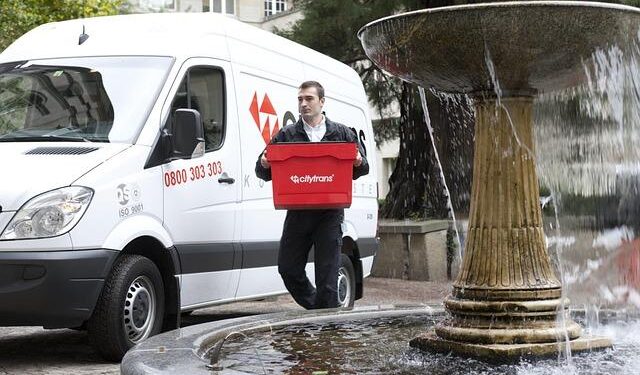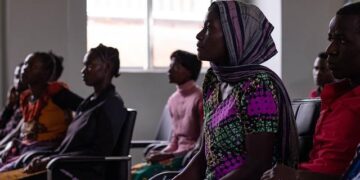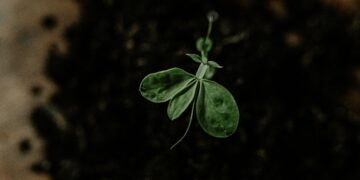Table of Contents
Introduction: The Day My Blueprint Crumbled
We had a name picked O.T. We had a room decorated.
We had scrubs on, standing in a hospital delivery room, watching a baby take his first breath.
This was it.
This was the moment our adoption journey, a path we had followed with the precision of engineers building a bridge, was supposed to reach its destination.
We had submitted the application, passed the criminal background checks, and completed the home study—a rigorous series of interviews and training sessions designed to ensure we were ready.1
We had followed the blueprint, checked every box.
And then, 48 hours later, the blueprint crumbled into dust.
The birth mother, a woman we had come to know and admire, made the brave and agonizing decision to parent her son.
We received the call, and the world tilted.
The grief was unlike anything I had ever known—a hollow ache for a child who was alive and well, just not with us.2
It was the second time this had happened.
Our second “failed match.”
That term, “failed match,” echoed in my mind.3
It felt so transactional, so clinical.
It implied a broken contract, a faulty product.
But this wasn’t a business deal; it was about human hearts and the creation of a family.
The pain wasn’t just from the loss; it was from the profound dissonance between the process we were told to follow and the reality we were living.
The official guides from government bodies and agencies lay out a seemingly linear path: choose an agency, complete paperwork, get approved, find a match, bring your child home.1
It creates a powerful, implicit promise: if you follow the steps, you will become a parent.
Yet, our experience, and the stories of so many others, screamed a different truth.
The most significant variables weren’t on any checklist.
They were the unpredictable, beautiful, and messy realities of human relationships.
A study on why adoptions don’t complete found that the most frequent reason was simply that the expectant parent decided not to proceed.6
The system had given us a map for a neat, orderly grid, but we were trekking through a wild, unpredictable forest.
I was angry, lost, and felt manipulated by a process that had set us up for this specific kind of heartbreak.2
I realized the entire framework I was using—the checklist, the project plan, the transactional mindset—was fundamentally broken.
To move forward, I couldn’t just try again.
I had to find a whole new way to see the journey.
Part I: The Epiphany – From Assembling Parts to Cultivating a Garden
In the quiet, raw aftermath of that loss, I stopped looking at adoption pamphlets and started reading about life.
I found myself drawn to metaphors people use to navigate immense challenges: life as a journey, a battle, a roller coaster, a mountain climb.7
Then I read about life as a garden, and everything clicked into place.
You don’t build a garden by ordering parts from a catalog and assembling them according to a manual.
You don’t control every variable.
A garden is a living, breathing ecosystem.
You cultivate it.
You prepare the soil, you understand the seed and where it came from, you provide water and sunlight, you protect it from storms, and you nurture its growth with patience and commitment.
You work with its nature, not against it.
This was the epiphany.
Adopting a child isn’t a manufacturing process; it’s an act of cultivation.
It’s not about finding the right “match” to plug into your life.
It’s about creating a rich, nurturing environment where a child, with their own unique history and needs, can be planted and thrive.
This “Gardening Paradigm” changed everything.
It reframed the entire journey from one of acquisition and control to one of nurturing, relationship, and radical acceptance.
This new mental model isn’t built on a single, novel idea.
Instead, it weaves together the most vital, humane, and effective principles that are emerging in modern adoption thought but are too often treated as optional add-ons.
It takes the core tenets of ethical, child-centric practice 8, the deep understanding of trauma-informed care 9, and the proven benefits of open adoption 11 and recognizes them not as “best practices” to bolt onto the old, broken model, but as the very foundation of a new one.
This paradigm rests on four pillars, which mirror the process of a gardener bringing a new plant into their care.
These pillars became my new map, and they are what I want to share with you:
- Preparing the Soil: The essential, internal work a hopeful parent must do on themselves before ever being matched.
- Understanding the Seed and its Origins: The profound respect and honor required for the child and their birth family.
- Tending the Adoption Ecosystem: Navigating the practical pathways and professionals with a new, relational mindset.
- The Harvest and Lifelong Care: The joy of finalization and the understanding that a family garden requires tending for a lifetime.
Part II: Preparing the Soil – The Foundational Work of the Hopeful Parent
The conventional adoption process begins with the homestudy.
It’s often viewed as a series of hurdles to clear, an exam you must pass to be deemed “worthy.” In the Gardening Paradigm, this step is transformed.
It is not an exam; it is the vital, non-negotiable work of preparing the soil.
You cannot expect a vulnerable seed to thrive in hard, rocky, or depleted ground.
The quality of your soil determines everything.
The Homestudy as Soil Testing, Not an Exam
Officially, the homestudy is a collection of documents and interviews.
A social worker will gather your family background, financial statements, health reports, and personal references.12
You’ll undergo criminal background checks and provide copies of legal documents like marriage licenses and birth certificates.1
This process can take three to six months and often feels invasive.12
From a gardener’s perspective, this is merely the basic soil analysis.
It confirms the fundamental composition—that you are financially stable enough to provide for a child and live in a safe environment.1
But this is the bare minimum.
The real work of the homestudy is a “mutual process” of discovery between you and your social worker.14
The social worker is not an inspector looking for flaws; they are a master gardener helping you understand the unique properties of your soil.
They are there to help you explore your motivations, your parenting philosophies, your strengths, and your capacity to adapt.14
This phase is your opportunity to be radically honest with yourself about your readiness.
Tilling the Ground of Grief and Loss
Many of us arrive at adoption’s gate carrying the heavy stones of grief.
For my husband and me, and for so many others, the path was paved with the heartbreak of infertility.15
This is a profound loss—the loss of a biological child, of a specific dream for how your family would be formed.
The transactional model of adoption often encourages you to push past this, to focus on the “prize” at the end of the process.
This is a grave mistake.
Planting a new seed on top of these unaddressed stones of grief is a recipe for disaster.
You must till the soil.
You must do the hard work of acknowledging and mourning what was lost before you can create a truly welcoming space for what is to come.15
This means being honest with yourself: Is adoption a “second best” option for you? Have you fully grieved the dream of a biological child?.15
If you don’t, these unresolved feelings can interfere with your ability to bond with your adopted child and can manifest as guilt or a fear of rejection.18
Preparing the soil means making peace with your story so you can fully embrace the beauty of a new one.
Amending the Soil with Trauma-Informed Knowledge
The most crucial amendment you can add to your soil is knowledge—specifically, a deep understanding of adoption trauma.
Every adoption begins with a loss.
Even an infant adopted at birth experiences the profound, primal trauma of separation from their birth mother.10
This is not a judgment; it is a biological and psychological reality.
As a prospective parent, understanding this is not optional.
It is your primary responsibility.
This means learning about the “Seven Core Issues of Adoption,” a framework that illuminates the lifelong themes adoptees, birth parents, and adoptive parents navigate: Loss, Rejection, Shame/Guilt, Grief, Identity, Intimacy, and Mastery/Control.18
It means understanding that a child’s challenging behaviors are often coping mechanisms rooted in their history of loss.19
This knowledge fundamentally changes your expectations of parenting.
You learn to shift your focus from love and trust to commitment.20
A newborn baby earns attachment from their parents through months of relentless care despite the exhaustion and frustration.
An adopted child, even an older one, needs to feel that same unwavering commitment.
They may not recognize love or be ready to offer it, but they will test your commitment, again and again, to see if you are “rock steady”.20
The standard process emphasizes external qualifications like income and square footage.
But the true prerequisite for a successful adoption is internal.
The most critical work is the proactive emotional labor of preparing yourself.
Studies show that a primary barrier to adoption is prospective parents’ fear of being unable to meet a child’s behavioral needs.6
The most effective adoption preservation services work by teaching parents to understand their child’s behavior in the context of their history and trauma.19
By amending your soil with this knowledge
before you plant, you transform yourself from a reactive parent who might one day be in crisis to a proactive, trauma-informed gardener ready to provide the specific care your child will need to heal and thrive.
Part III: Understanding the Seed and its Origins – A New Respect for the Birth Family
Once the soil is prepared, a gardener turns their attention to the seed itself.
In the old, transactional model, the focus is on acquiring a “healthy baby.” In the Gardening Paradigm, the focus shifts to honoring the whole child—the “seed”—and the complex, living system from which they came.
This requires a radical reorientation toward the birth family, particularly the birth mother, viewing them not as a means to an end, but as an integral and respected part of the child’s story.
The Seed is Not a Blank Slate
An adopted child is not a blank slate upon which we can write our own story.
They arrive with a history, a genetic heritage, and a narrative that began long before we entered the picture.
To deny this is to deny a fundamental part of who they are.
This is why keeping adoption a secret is so damaging.21
Children have an intrinsic sense that something is different, and they experience feelings of grief and loss for parents they may have never known.22
Honoring the seed means committing to telling your child their story from the very beginning, in honest, loving, and age-appropriate ways.
A five-year-old needs to know a different level of detail than a twelve-year-old, but the truth of their adoption should be a normal, consistent narrative in their life.22
It is not a single, dramatic revelation but a story that unfolds as they grow, a story that you, their parent, have the privilege of helping them understand and integrate into their identity.
Honoring the First Gardener: The Birth Mother’s Story
Perhaps the most profound shift in the Gardening Paradigm is in its view of the birth mother.
The world is full of harmful and outdated myths: that birth mothers are all irresponsible teenagers, that they are selfish, that they don’t love or want their children.23
These stereotypes are not only cruel but factually wrong.
The truth, borne out in countless personal stories, is that the decision to place a child for adoption is almost always a profound act of love and sacrifice.
Most women who choose adoption are in their 20s or 30s, and many are already parenting another child.23
They choose adoption not because they don’t love their baby, but because they love their baby so much that they want a life for them that they know they cannot currently provide.23
As one birth mother, Heather, put it, “Wanting your child to have more than you can offer is the biggest act of love any human could do”.25
In our garden, the birth mother is the first gardener.
She is the one who nurtured and protected the seed, and then, with immense love and courage, chose the soil where she believed it could best flourish.
To disrespect her is to disrespect the very origins of your child.
The Ethics of the Ecosystem: A Non-Negotiable Foundation
A healthy garden cannot grow in poisoned soil.
Likewise, a healthy family cannot be built on an unethical foundation.
Ethical practice must be the bedrock of your adoption journey.
This means ensuring that the child’s best interests are always the primary focus, above the desires of any adults involved.8
It means that any fees paid are transparent, reasonable, and never based on a child’s race or background.8
Crucially, it means respecting the legal and moral rights of both birth parents.
Ethical agencies and lawyers must make diligent, proactive efforts to identify and inform the birth father of a pending adoption.8
Our own failed adoption was a painful lesson in this: the birth mother had concealed her marriage to the birth father, and when he was located, he refused to consent to the adoption plan.3
While devastating for us, his right to parent his child was paramount.
An adoption built on the violation of his rights would have been built on a lie.
An ethical adoption ensures there is no coercion, fraud, or bribery, and that before adoption is even pursued, all efforts have been made to support the child remaining with their family of origin.8
Openness as Sunshine and Water
In the old model, “open adoption” was often seen as a risky concession, a threat to the adoptive parents’ claim on their child.
In the Gardening Paradigm, openness is understood as an essential nutrient—it is the sunshine and water that allow the child to grow into a whole and healthy person.
The myths surrounding open adoption—that it’s a form of co-parenting, that it’s confusing for children, that the relationships inevitably deteriorate—have been thoroughly debunked by research and experience.11
In an open adoption, the adoptive parents are the only legal parents and are responsible for all decisions.11
And children are not confused; they are capable of understanding different roles and relationships.11
The benefits are immense.
Open adoption gives the child direct access to their medical history and answers to the profound questions of “Why was I placed?” and “Who do I look like?”.29
It is shown to reduce an adoptee’s feelings of rejection and abandonment and aid in the formation of a healthy identity.11
For birth parents, it provides peace of mind and lessens grief and regret.11
For adoptive parents, it fosters more empathy and a stronger sense of permanence.11
As one adoptive mother reflected, openness moves adoption “from the shadows of archaic thinking where adoption carries shame and secrets” into the light.31
The conventional view frames openness as a risk.
The deeper truth is that the real risk lies in the secrecy of closed adoption.
That secrecy creates a vacuum of identity and information that a child will spend a lifetime trying to fill.
Openness is a powerful de-risking strategy for a child’s long-term emotional well-being.
It is not an optional feature; it is fundamental to the health of the garden.
Part IV: Tending the Adoption Ecosystem – Navigating the Pathways and Professionals
With well-prepared soil and a deep respect for the seed, the gardener must then navigate the practical ecosystem of adoption.
This means choosing the right tools, pathways, and fellow gardeners to help tend the process.
The transactional model presents a single, linear track.
The Gardening Paradigm reveals a varied landscape with different plots, each requiring a unique approach.
Your task is to choose the path that best fits your family’s philosophy, resources, and capacity.
Choosing Your Fellow Gardeners (The Professionals)
In this journey, you are not alone.
You will work with professionals—social workers, lawyers, agency staff—who can either be tremendous assets or significant obstacles.
It is critical to choose them wisely.
An adoption agency is not a retail store, and a lawyer is not just a document processor.
They are your fellow gardeners.
You must find professionals who share a child-centric, ethical, and relational worldview.6
An adoption lawyer is essential for navigating the complex web of state, federal, and sometimes international laws.32
They handle the critical legal work of terminating birth parent rights and finalizing the adoption in court.33
An adoption agency typically provides a broader suite of services, including counseling for birth parents and adoptive parents, education and training, the homestudy assessment, and matching services.5
Even if you work with an agency, you will still need an attorney to handle the final legal proceedings.32
The key is to find partners who see the whole garden, who understand the emotional and human complexities, and who prioritize the well-being of the child above all else.
The Plots in the Garden (The Pathways)
In North America, there are three primary pathways to domestic infant adoption.
Each is like a different kind of plot in a large community garden, with its own unique characteristics, costs, and cultivation methods.
- Private Agency Adoption: The Managed Greenhouse. This is the most common path for domestic infant adoption.36 Here, a licensed private agency acts as the master gardener. They recruit and counsel expectant parents, screen and prepare adoptive families, and facilitate the match. It’s a structured, professionally managed environment. This path offers significant support and guidance, but it comes with higher costs, typically ranging from $20,000 to over $40,000 in the U.S. and $15,000 to $30,000 in Canada, to cover agency operations, legal work, and birth mother expenses.36 The timeline can be long and unpredictable, often averaging one to two years from application to placement.39
- Public (Foster Care) Adoption: The Community Orchard. This pathway involves adopting children who are in the care of the state or provincial child welfare system.40 While most children adopted from foster care are older, infants are sometimes available, particularly in cases where they are part of a sibling group or are adopted by their foster parents.36 This path is not about an expectant mother making a voluntary plan; it involves the legal termination of parental rights by a court due to abuse, neglect, or abandonment.38 The costs are minimal or often free, and families may even receive financial subsidies to help care for the child.1 The focus is on finding permanent, loving homes for children who desperately need them.
- Independent (Private) Adoption: The Direct-to-Gardener Plot. In an independent adoption, the prospective adoptive parents and the birth parents connect directly, without an agency acting as an intermediary.42 This connection often happens through personal networking or online advertising (where legal).33 An adoption attorney is then hired to manage the legal aspects of the process.33 This path can potentially be faster and less expensive if a match is already established. However, it requires the adoptive parents to act as their own general contractors, independently sourcing and coordinating all necessary services, such as the homestudy, counseling for the birth mother, and managing living expenses.33 This path carries a higher financial risk, as money spent on a match that disrupts is often unrecoverable.33
The choice of pathway is deeply personal.
The table below offers a comparative overview to help you decide which “gardening style” best aligns with your family.
| Pathway | Gardener’s Analogy | Key Players | Typical Timeline | Estimated Cost (USD/CAD) | Key Considerations |
| Private Agency Adoption | The Managed Greenhouse | Adoptive Parents, Birth Parents, Agency Staff, Social Workers, Lawyers | 1–3 years 36 | $20,000–$40,000+ 36 | Pros: High level of professional support, counseling, and guidance. Agency handles most coordination. Cons: Can be the most expensive route; wait times can be long and are often influenced by adoptive parent preferences.44 |
| Public (Foster Care) Adoption | The Community Orchard | Adoptive Parents, Child Welfare Agency (e.g., CAS, MCFD), Social Workers, Lawyers, Court System | 6 months–2 years 39 | Low-cost to free; subsidies often available 1 | Pros: Fulfills a critical need for children in care; very low financial cost. Cons: Primarily for older children, not infants. Involves navigating government bureaucracy. Children have often experienced significant trauma.41 |
| Independent (Private) Adoption | The Direct-to-Gardener Plot | Adoptive Parents, Birth Parents, Lawyers, Independent Social Workers/Counselors | Varies widely; can be very fast if a match is pre-identified | Varies; can be less than agency adoption, but with higher financial risk 33 | Pros: More control for adoptive parents; potentially faster and less expensive. Cons: Adoptive parents must manage all aspects themselves. Higher risk of financial loss from a disruption. Potential for ethical pitfalls if not guided by experienced professionals.33 |
This framework reveals a counter-intuitive truth: the more rigidly you try to control the outcome (e.g., specifying gender, race, and a closed adoption), the longer and more fraught your journey will likely be.44
True success in this garden comes not from tightening your grip, but from relinquishing it—from preparing the best possible soil and being open to the beautiful and diverse seeds that need a place to grow.
Weathering the Storms (Failed Matches)
No matter the pathway, storms can arise.
The most painful is a match that does not result in a placement.
From a place of wisdom, I can now see the term “failed adoption” for the misnomer it Is.4
There was no failure.
A birth mother choosing to parent her child is not a system breakdown; it is the original gardener asserting her right and finding the strength to tend her own plant.45
This perspective doesn’t erase the profound grief, but it reframes it.
It allows you to honor her choice while you navigate your own pain, free from the added burden of feeling cheated by a faulty process.
It is a painful, but natural and valid, outcome within the adoption ecosystem.
Part V: The Harvest and Lifelong Care – Finalization and the Ever-Growing Family Garden
After the soil has been prepared, the seed honored, and the ecosystem tended with patience, there comes a moment of profound joy: the harvest.
But unlike a seasonal crop, this harvest is the beginning of a lifelong commitment.
The finalization of an adoption is not the end of the journey; it is the moment the garden truly begins its life.
Rooting the Placement (Legal Finalization)
The adoption finalization is the legal proceeding that makes you your child’s permanent, legal parents forevermore.35
It is the culmination of a long and arduous process.
After a child is placed in your home, there is a mandatory supervisory period, typically lasting at least three to six months, during which a social worker makes post-placement visits to ensure everyone is adjusting well.1
Once this period is complete, your attorney files a petition with the court.
The finalization hearing itself is often a joyous and emotional event.
In a courtroom or a judge’s chambers, attended by you, your child, your attorney, and your social worker, the judge will review the case, ask some final questions, and sign the official adoption decree.35
This is the moment the state legally recognizes what your heart has known for months.
In our garden, this is when the seedling is permanently transplanted, its roots taking firm and final hold in the new soil.
It is a day for celebration, for tears of gratitude, and for taking lots of pictures.35
The Lifelong Seasons of the Garden
Adoption doesn’t end when you walk out of the courthouse.
It is a lifelong journey, an identity, and a relationship that evolves through many seasons.
The core issues of adoption—loss, rejection, identity—do not disappear.
They will resurface in new ways as your child grows and develops.18
The questions a five-year-old has about their birth parents are vastly different from the complex identity explorations of a teenager or the medical history concerns of an adult adoptee preparing to start their own family.22
Your family garden will always need tending.
This means being a lifelong learner, staying educated on adoption issues, and being prepared to support your child through each developmental stage.
It means creating a home where talking about adoption is normal and safe, and where your child’s feelings—all of them—are validated.30
Nurturing the Open Adoption Relationship
If your garden includes the beautiful perennial of an open adoption, that relationship will also require lifelong care.
A healthy, successful open adoption is built on a foundation of mutual respect, clear communication, healthy boundaries, and unwavering flexibility.47
It is critical to remember that this is
not co-parenting.11
You, the adoptive parents, are the sole legal parents, responsible for the child’s upbringing and well-being.
The relationship will ebb and flow over time.11
There may be periods of frequent contact and periods of quiet.
The key is to maintain open lines of communication and to always, always center every decision on what is best for the child.47
This relationship is one of the greatest gifts you can give your child, a living link to their history and a constant affirmation that they are loved deeply by two families.31
Conclusion: My Garden Today
My own garden looks very different from the one I first imagined.
It was planted after a storm, in soil tilled with grief and amended with hard-won wisdom.
It is a transracial family, a garden of different colors and textures, richer and more beautiful than any uniform plot I could have designed.
It is an open adoption, filled with the light of honesty and the warmth of extended relationships.
The journey to this place was the hardest of my life.
It demanded that I tear up the faulty blueprints I had been given and learn to trust an organic, unpredictable, and profoundly human process.
It forced me to stop trying to control the outcome and instead focus on becoming the best possible gardener I could be.
Building a family through adoption is not a project to be managed or a transaction to be completed.
It is a sacred act of cultivation.
It is about having the courage to prepare your heart like soil, to honor the precious seed you are given, to tend the complex ecosystem of relationships with love and respect, and to commit to a lifetime of care.
It is about weathering the storms and celebrating the harvest.
It is about starting a garden, and watching, with awe and gratitude, what grows.
Works cited
- The Adoption Process – Office of Children and Family Services, accessed on August 9, 2025, https://ocfs.ny.gov/programs/adoption/process.php
- How Do I Deal with the Pain of a Failed Match? – Adoption.com, accessed on August 9, 2025, https://adoption.com/how-do-i-deal-with-pain-failed-match/
- Failed Adoption (Domestic Infant) – Reddit, accessed on August 9, 2025, https://www.reddit.com/r/Adoption/comments/b006sd/failed_adoption_domestic_infant/
- This Failed Life – Pennsylvania Adoption Agency | Absolute Love Adoptions, accessed on August 9, 2025, https://absoluteloveadoptions.com/blog/the-role-failure-plays-in-adoption/
- How Does Infant Adoption Work? A Complete Guide to the Process – Paths for Families, accessed on August 9, 2025, https://pathsforfamilies.org/resource/infant-adoption-process/
- National Council For Adoption: Home, accessed on August 9, 2025, https://adoptioncouncil.org/
- Metaphors for Life That Can Fit Your Journey – Verywell Mind, accessed on August 9, 2025, https://www.verywellmind.com/metaphors-for-life-2330716
- Ethics in Adoption – Families Rising, accessed on August 9, 2025, https://wearefamiliesrising.org/positions-on-key-issues/ethics-in-adoption/
- Trauma-Informed Practice | Child Welfare Information Gateway, accessed on August 9, 2025, https://www.childwelfare.gov/topics/casework-practice/trauma-informed-practice/
- Understanding Adoption Trauma: Signs, Effects, and Healing Strategies, accessed on August 9, 2025, https://seattleneurocounseling.com/blog-1/understanding-adoption-trauma-signs-effects-and-healing-strategies_1
- 7 Myths About Open Adoption – Spence-Chapin, accessed on August 9, 2025, https://spence-chapin.org/7-myths-open-adoption/
- Completing a home study – AdoptUSKids, accessed on August 9, 2025, https://adoptuskids.org/adoption-and-foster-care/how-to-adopt-and-foster/getting-approved/home-study
- Adoption Home Study Guide, accessed on August 9, 2025, https://adoptionnetwork.com/adoptive-parents/how-to-adopt/adoption-process/adoption-home-study-guide/
- The Basics of Adoption – Free State Social Work, accessed on August 9, 2025, https://www.freestatesocialwork.com/articles/f_basicsbulletin.pdf
- Adoptive Parent Resources: Common Concerns about Adoption – Lifelong Adoptions, accessed on August 9, 2025, https://www.lifelongadoptions.com/common-concerns-about-adoption
- Our Adoption Journey – Rosemary Lucas, accessed on August 9, 2025, https://rosemarylucas.co.uk/posts-and-blogs/blogs/
- We adopted our daughter in the UK- I couldn’t find many personal stories when we were going through it, so I wrote ours! 🙂 : r/AdoptionUK – Reddit, accessed on August 9, 2025, https://www.reddit.com/r/AdoptionUK/comments/1jw7hr2/we_adopted_our_daughter_in_the_uk_i_couldnt_find/
- The 7 Core Issues of Adoption, accessed on August 9, 2025, https://adoption-beyond.org/the-7-core-issues-of-adoption/
- Adoptive Families Need Ongoing Support, accessed on August 9, 2025, https://wearefamiliesrising.org/resource/support-adoptive-families/
- Advice for Adoptive Parents – Families Rising, accessed on August 9, 2025, https://wearefamiliesrising.org/resource/advice-for-adoptive-parents/
- 5 Things Adoptive Parents Should Never Do, accessed on August 9, 2025, https://www.lifelongadoptions.com/10-lgbt-adoptive-parents/303-5-things-adoptive-parents-should-never-do
- Adoption Issues | Washington State Department of Children, Youth, and Families, accessed on August 9, 2025, https://dcyf.wa.gov/services/adoption/adoption-issues
- The Top 5 Adoption Myths About Women Placing Their Children, accessed on August 9, 2025, https://lifetimeadoption.com/birthmothers-the-top-5-myths-about-choosing-adoption-for-your-child/
- Adoption Misconceptions for Birth Parents, accessed on August 9, 2025, https://adoptionchoicesofmissouri.org/adoption-misconceptions-for-birth-parents/
- Birthmother Stories from Real Adoptions, accessed on August 9, 2025, https://www.angeladoptioninc.com/newborn-adoption-success-stories/birthmother-stories/
- The Best for Her Babies – Lindsey’s Adoption Story, accessed on August 9, 2025, https://www.americanadoptions.com/pregnant/lindseys-adoption-story
- Ethics in Infant Adoption – Cradle.org, accessed on August 9, 2025, https://cradle.org/blog/ethics-in-infant-adoption/
- Open Adoption Myths and Facts – America Adopts, accessed on August 9, 2025, https://americaadopts.com/resources/open-adoption-myths-and-facts/
- What Growing Up In An Open Adoption Has Taught Me, accessed on August 9, 2025, https://americaadopts.com/what-growing-up-in-an-open-adoption-has-taught-me/
- Our Open Adoption Story – Diana | American Adoptions Blog |, accessed on August 9, 2025, https://www.americanadoptions.com/blog/our-open-adoption-story-diana/
- An Adoptive Mother’s Thoughts on Open Adoption – Family Connections, accessed on August 9, 2025, https://www.adoptfamilyconnections.org/blog/an-adoptive-mothers-thoughts-on-open-adoption
- What’s the Difference Between an Adoption Lawyer and an Adoption Agency?, accessed on August 9, 2025, https://www.altshulerlaw.com/blog/whats-the-difference-between-an-adoption-lawyer-and-an-adoption-agency/
- Adoption Without an Agency: What is Independent Adoption? – American Adoptions, accessed on August 9, 2025, https://www.americanadoptions.com/adoption/independent_adoption
- What Does An Adoption Lawyer Do? | Gioffre Schroeder & Jansky, accessed on August 9, 2025, https://gslawohio.com/child-custody/what-does-an-adoption-lawyer-do/
- How To Finalize Your Adoption – Copps DiPaola Silverman, PLLC, accessed on August 9, 2025, https://thecdslawfirm.com/albany_adoption_lawyers_attorneys/how-to-finalize-your-adoption/
- Infant adoption – Belonging Network, accessed on August 9, 2025, https://belongingnetwork.com/adoption-permanency/adoption/types-of-adoption/infant-adoption/
- Types of Adoption in Canada: A Complete Guide – Law Office of Athena Narsingh, accessed on August 9, 2025, https://athenalawoffice.com/blog/types-of-adoption-in-canada/
- Foster Care Adoption: How Does the Process Differ From Private Adoption? | Durango Family Law, accessed on August 9, 2025, https://durangofamilylaw.com/blog/foster-care-adoption-how-does-the-process-differ-from-private-adoption/
- Adoption Timelines: How Long Does the Process Take in the US? – Trusted Estate Planning Attorney in Tulsa, OK – Personalized Legal Help You Can Count On – Welsh & McGough, PLLC, accessed on August 9, 2025, https://www.tulsafirm.com/adoption-timelines-how-long-does-the-process-take-in-the-us/
- Adoption in the United States – Wikipedia, accessed on August 9, 2025, https://en.wikipedia.org/wiki/Adoption_in_the_United_States
- Adoption – Ontario Association of Children’s Aid Societies, accessed on August 9, 2025, https://www.oacas.org/childrens-aid-child-protection/adoption/
- Private Adoption vs. Agency Adoption Information | AAAA, accessed on August 9, 2025, https://adoptionart.org/adoption/private-adoption-vs-agency-adoption/
- Independent Adoption | Superior Court of California | County of Orange, accessed on August 9, 2025, https://www.occourts.org/self-help/self-help-family-law/self-help-adoptions/independent-adoption
- How Long Does it Take to Adopt a Child? – Adoption Network, accessed on August 9, 2025, https://adoptionnetwork.com/how-long-does-it-take-to-adopt-a-child/
- Surviving a Failed Adoption Match – My Florida Adoptions, accessed on August 9, 2025, https://www.myfladoptions.com/surviving-a-failed-adoption-match
- Adoption Laws, accessed on August 9, 2025, https://www.adopt.org/adoption-resources/adoption-laws
- 6 Tips for a Successful Open Adoption, accessed on August 9, 2025, https://lifetimeadoption.com/adoptivefamilies-tips-successful-open-adoption/
- Open Adoption: Setting Contact Frequency Guidelines, accessed on August 9, 2025, https://adoption-beyond.org/open-adoption-setting-contact-frequency-guidelines/
- Birth Mother Story: Open Adoption | Adoptions With Love, accessed on August 9, 2025, https://adoptionswithlove.org/uncategorized/birth-mother-open-adoption-story






